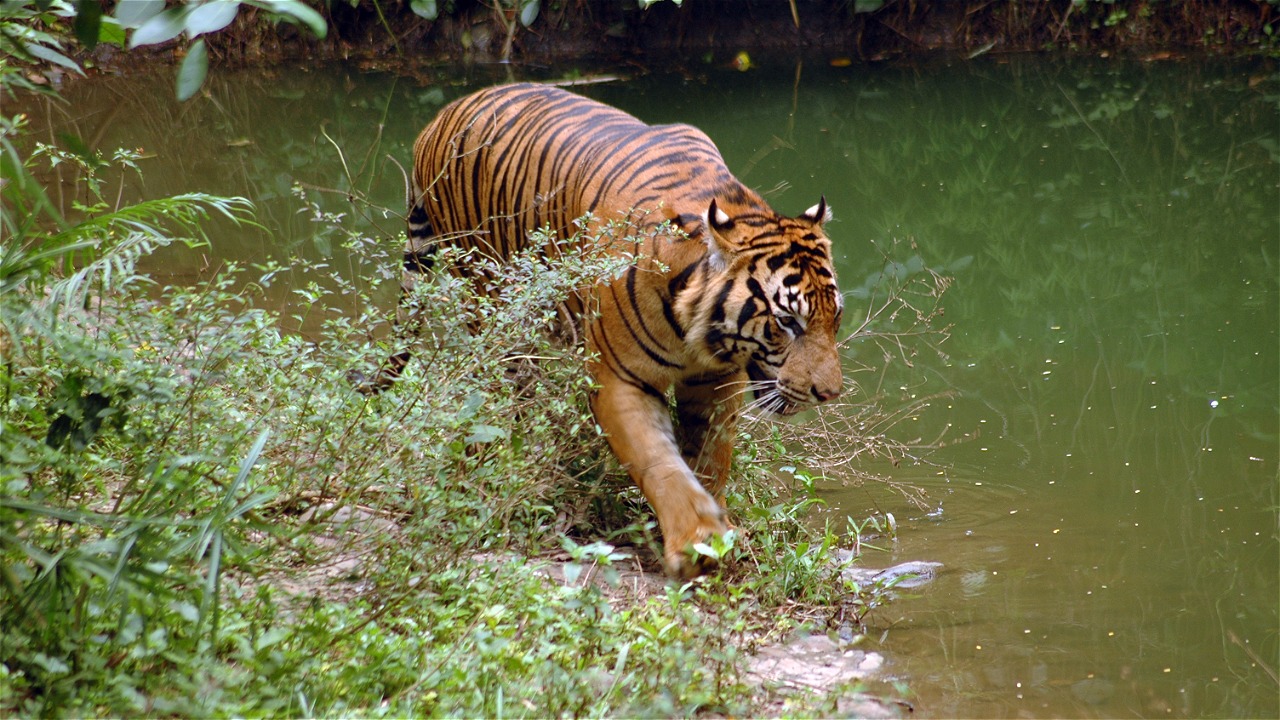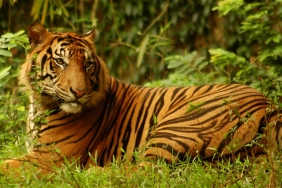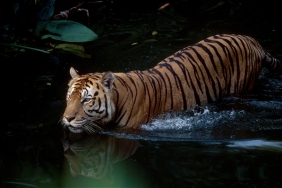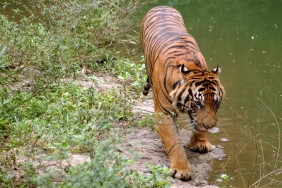KARMILA PARAKKASI; SURVEY AND MONITORING COORDINATOR OF WWF-INDONESIA’S TIGER RESEARCH TEAM
By Annisa Ruzuar
It surprises some to learn that the coordinator of WWF’s Tiger Survey team is a young woman. The always-smiling Karmila Parakkasi, or Mila as fellow team members call her, calmly leads her team through the treacherous path of Sumatra’s forest searching for tiger trails. When asked how she feels being the only woman on the team, she said that it never bothers her much. “At first, it might be slightly uneasy to be the only female member, but over time I get used to it. Eventually it motivates me to try my best and keep up with the rest of the team.”
Mila joined the team in 2008 right after she obtained her degree in Forest and Nature Resource Conservation. “I always loved animals, but I love them even more after volunteering as caregiver for baby siamang (Symphalangus syndactylus) and orangutan (Pongo pygmaeus) during my study.”
It was also during her study that she first made a connection with WWF. Her final thesis was sponsored by WWF’s scholarship program awarded to selected students in Gajah Mada University. The scholarship covered two months of research on tiger and ecology in Tesso Nilo National Park in Riau, Sumatra. Tesso Nilo has become Mila’s home range ever since. It only took her a brief time after her graduation before Sunarto, the previous coordinator, asked her to join the team as his successor.
Her leadership has proven to be fruitful to the tiger survey team. In August 2009, images from camera traps installed in the Rimbang Baling-Bukit Tigapuluh corridor showed a tiger with her cubs. “It was definitely one of the best moments for me as well as for the team. After five years of research, we finally had pictures of tiger cubs.”
In September, the team obtained more images showing the same tiger cub. “You can identify tigers by their stripes. Just like human fingerprints, they are unique. I usually take two stripes or marks which are easy to spot, then compare them to other pictures. If both of the pictures show similar marks, then it is the same tiger.” More good news for the team came the following month, as the video traps in the location recorded the tigress with her cubs in Logas, Riau Province.
While collecting her favorite condiment, the ginger torch flower, Mila expressed her hope for the Year of Tiger Campaign: “I hope that next year’s campaign will garner more support and commitments for tiger conservation. We would like to see active participation from various stakeholders, in or out of the field.”
She believes in a coordinated effort to tackle problem such as tiger poaching and habitat destruction. “We will work our best to contribute, by providing evidence that Sumatran tigers exist in the wild and they need a healthy ecosystem to survive.”





